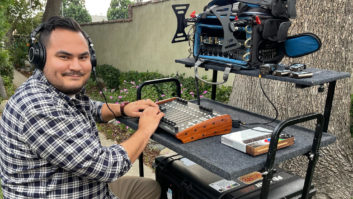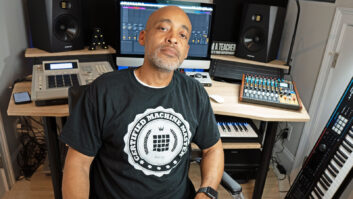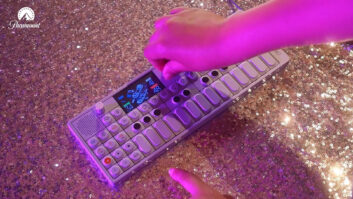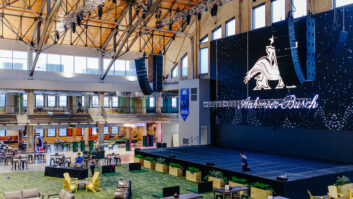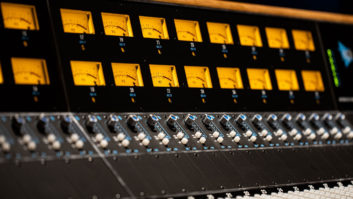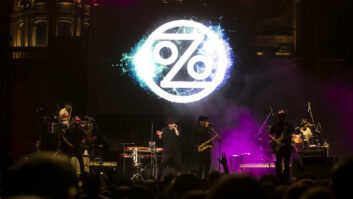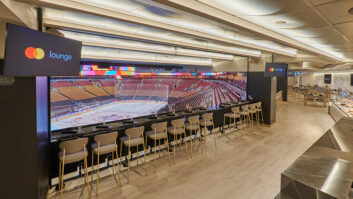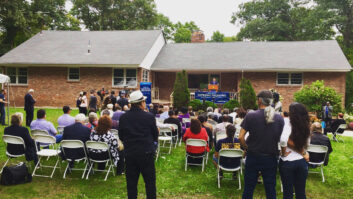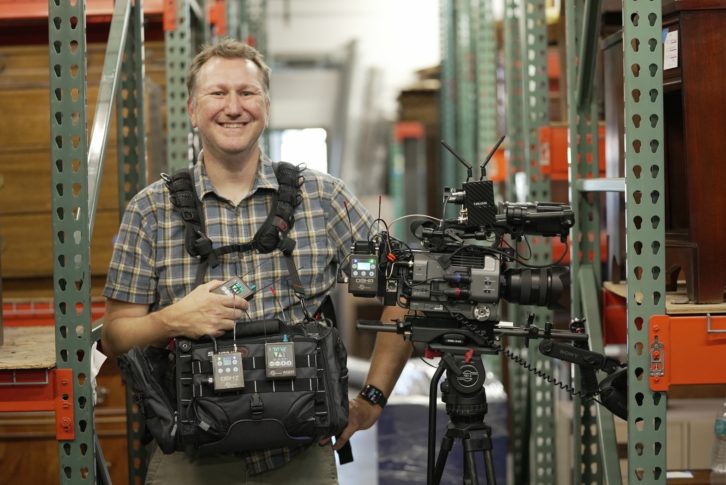
Chicago, IL (September 27, 2021)—Location sound mixer Matt Vogel put his Lectrosonics wireless equipment to the test when HGTV’s Renovation Goldmine hosts Joe and Meg Piercy shot their show in and around Chicagoland during the height of the summer.
“The biggest challenge with home renovation shows is that they’re loud, dirty, and sweaty,” says Vogel. “We shot in the summer heat and our hosts were knocking down walls, cutting lumber, sweating through their outfits, and creating a lot of dust in the air. air. Nothing was scripted, cameras needed to follow talent through construction obstacles while covering multiple rooms, and booming the scene would have completely gotten in the way. As a result, wireless was the primary audio source, and I was rarely in the same room as the talent.”
Vogel, whose production credits also include The Oprah Winfrey Show and Bizarre Foods with Andrew Zimmern, mixed the show using his four SMQV and two LT transmitters paired with three SRc dual-channel receivers handle talent mics. An all-digital DCHT transmitted a feed which was then picked up by a DCHR receiver used as a camera hop plus three M2R belt-pack receivers for the producers’ in-ear IFB mix.
Atlanta Sound Mixer Goes Remote
Vogel also had to make the most of the region’s tight frequency spectrum. “Since the repackaging of frequency blocks in Chicago, it has been increasingly difficult to coordinate wireless devices,” he explains. “Plus, we’re switching locations several times per day, making things even harder. With up to five lavs on the talent, two camera hop feeds, and an IFB feed, I was using up to eight frequencies at the same time. This is why I switched to Lectrosonics digital systems for my camera hops and IFBs.”
Specifically, Vogel leverages the compatibility between the all-digital DCHT and DCHR and the M2R receivers, which employ Lectrosonics’ time-tested Digital Hybrid Wireless technology. “With the DCHT, DHCR, and M2R units, I essentially took three frequencies and combined them into one,” he details. “My DCHT is in my audio bag and sends two channels of digital audio to the DCHR, giving me a left-right camera mix over a single radio frequency. The M2Rs receive the same frequency from the DCHT, giving the producers the option to hear the stereo camera mix, or fold it down to a mono mix if they’d prefer to listen through just one headphone. When we have multiple cameras on set, I use extra M2Rs as camera hops. The interchangeable workflow is very handy.”
